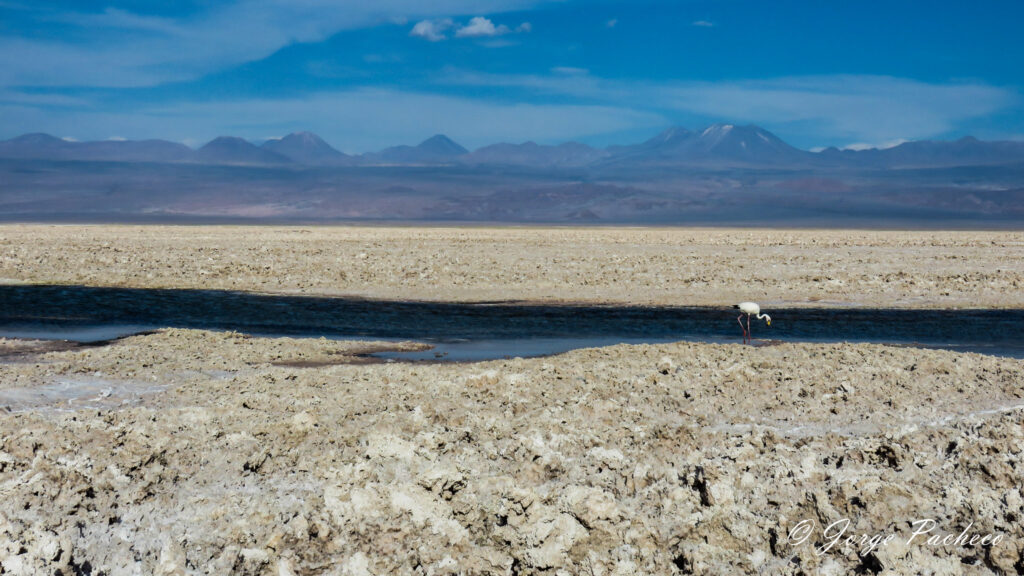
The Salar de Atacama in Chile is a large, dry salt flat surrounded by mountain ranges and is one of the driest places on Earth. Parts of the Atacama Desert have gone without rain for as long as people have been keeping track. Water rich in dissolved salts lies beneath this flat surface and it is particularly rich in lithium salts. Forty percent of the world’s known lithium deposits are the in the Salar.
Lithium is the key component of the batteries that power electric cars as well as cell phones and computers. It is an essential part of the transition away from fossil fuels and towards green energy. But it is important that this element is obtained responsibly with minimal damage to the environment.
Lithium, the lightest of the metals, tends to occur in layers of volcanic ash, but reacts quickly with water. It leaches into groundwater and settles in flat basins where it remains in a briny solution. This dense brine often ends up beneath pockets of fresh surface water, which are havens for fragile ecosystems.
A new study by the University of Massachusetts Amherst looked at the hydrological impact of lithium mining in the Salar. The study found that the impact of lithium mining depends critically on how long surface water is in place. Much of the fresh water there is at least 60 years old. Both droughts and extreme rainfall can cause major changes to the surface water that ordinarily comes from mountain runoff. Lithium mining itself only accounts for less than 10% of freshwater usage in the Salar. But the state of the surface water needs to be carefully monitored to protect the ecosystems as the climate continues to change.
**********
Web Links
How environmentally responsible is lithium brine mining? It depends on how old the water is
Photo, posted February 21, 2016, courtesy of Jorge Pacheco via Flickr.
Earth Wise is a production of WAMC Northeast Public Radio.
Leave a Reply